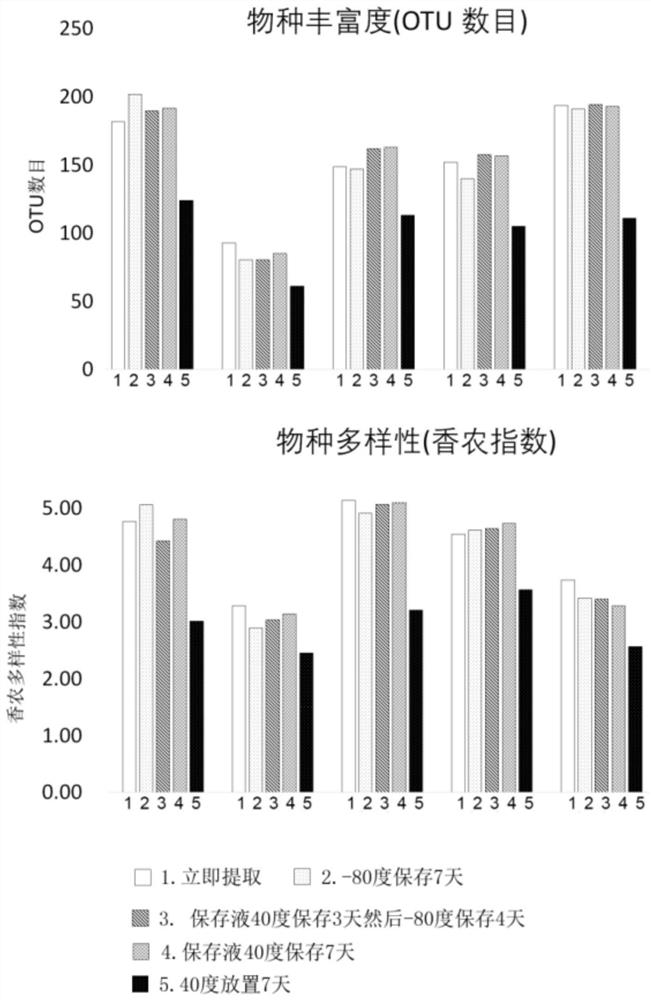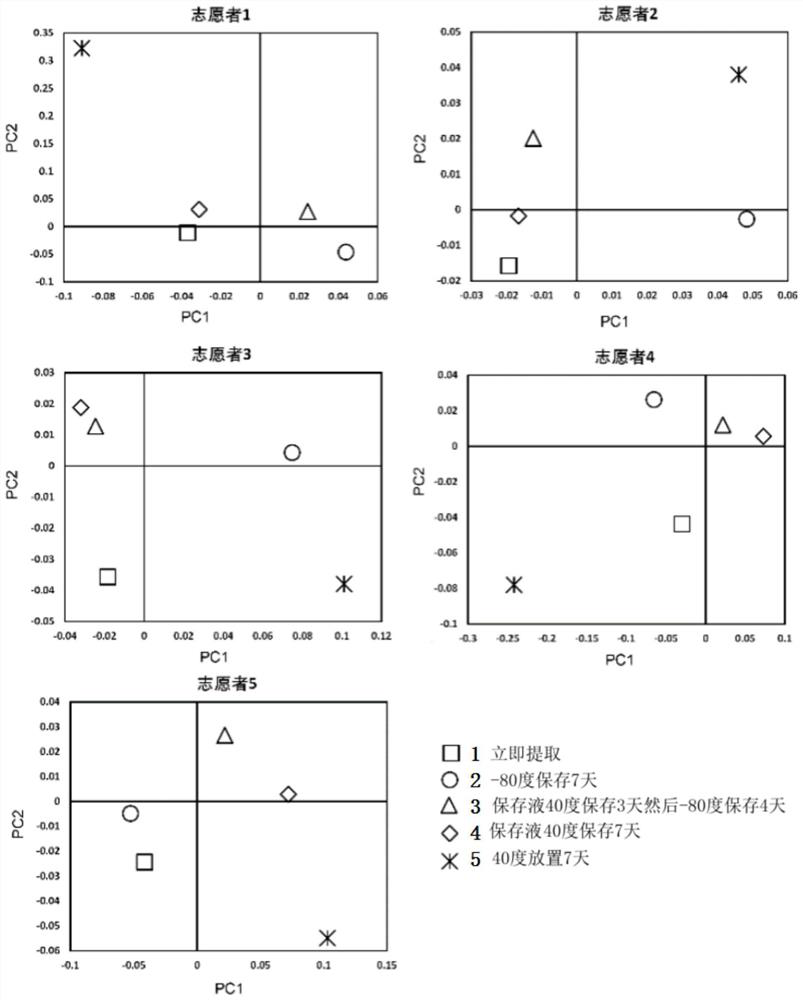Fecal nucleic acid preserving fluid and preparation method and application thereof
A technology for preserving liquid and nucleic acid, applied in the field of microorganisms, can solve problems such as fecal sample collection and transportation constraints
- Summary
- Abstract
- Description
- Claims
- Application Information
AI Technical Summary
Problems solved by technology
Method used
Image
Examples
preparation example Construction
[0027] The present invention also provides a method for preparing a fecal nucleic acid preservation solution, comprising:
[0028] (1) Take the required Tris, adjust the pH to 5.0-10.0 with hydrochloric acid, and prepare the Tris-HCl buffer solution;
[0029] (2) Dissolve the required amount of EDTA in sterile deionized water, adjust the pH to 5.0-10.0 with hydrochloric acid, and prepare the EDTA solution;
[0030] (3) Dissolve the required amount of sodium chloride and sodium citrate in sterile deionized water, add Tris-HCl solution and EDTA solution to mix, adjust the pH value to 7.0-10.0 with NaOH, and autoclave at 121°C 30min;
[0031] (4) Add the required amount of absolute ethanol to the solution in step (3), and filter the microporous membrane to sterilize.
[0032] (5) Dispense the prepared preservation solution into sampling tubes, and store them under strict seal at room temperature.
Embodiment 1
[0035] In Example 1, the fresh stool samples of 5 volunteers were stored according to the following 5 conditions, and the influence of each storage condition on the nucleic acid of the stool samples was verified by nucleic acid extraction. The process is as follows:
[0036] First, fresh stool samples from 5 volunteers were collected and stored in accordance with the following 5 conditions:
[0037] Treatment group No. 1 (immediate extraction after sampling): about 0.2 g of fresh fecal samples were collected, and DNA extraction was performed immediately;
[0038] Treatment group No. 2 (direct cryopreservation for 7 days): about 0.2 g of fresh feces samples were collected, immediately frozen at -80°C, and stored for 7 days before DNA extraction;
[0039] Treatment group No. 3 (preservation solution at 40°C for 3 days and ultra-low temperature for 4 days): Collect about 0.2g of fresh feces sample, put it into an equal volume of preservation solution immediately, mix it upside d...
Embodiment 2
[0065] 1. Amplification and sequencing of ribosomal 16S rRNA gene V3-V4 region fragments
[0066] (1) Reagent: High-fidelity PCR polymerase system (Kapa Biosystems)
[0067] (2) Primer sequence:
[0068] Upstream primer (341F): 5'-ACTCCTACGGGAGGCAGCAG (SEQ ID NO: 1)
[0069] Downstream primer (806R): 5'-GGACTACHVGGGTWTCTAAT (SEQ ID NO:2), wherein V represents base A or base G or base C; W represents base A or T; H represents base A or base C or base T.
[0070] (3) Operation steps: Set the total PCR system to 30 μL, including 15 μL 2×KAPA HiFi HotStartReadyMix (Kapa Biosystems), 0.2 μM upstream and downstream primers, and 30-50 ng DNA template. Carry out the reaction according to the following PCR reaction conditions:
[0071] Table 1 PCR reaction conditions
[0072]
[0073] (4) The amplified fragments were purified by agarose gel electrophoresis, and sequenced in PE300 mode using the Illumina MiSeq sequencing platform.
[0074] 2. Analysis and comparison of sequenci...
PUM
 Login to View More
Login to View More Abstract
Description
Claims
Application Information
 Login to View More
Login to View More - R&D
- Intellectual Property
- Life Sciences
- Materials
- Tech Scout
- Unparalleled Data Quality
- Higher Quality Content
- 60% Fewer Hallucinations
Browse by: Latest US Patents, China's latest patents, Technical Efficacy Thesaurus, Application Domain, Technology Topic, Popular Technical Reports.
© 2025 PatSnap. All rights reserved.Legal|Privacy policy|Modern Slavery Act Transparency Statement|Sitemap|About US| Contact US: help@patsnap.com



